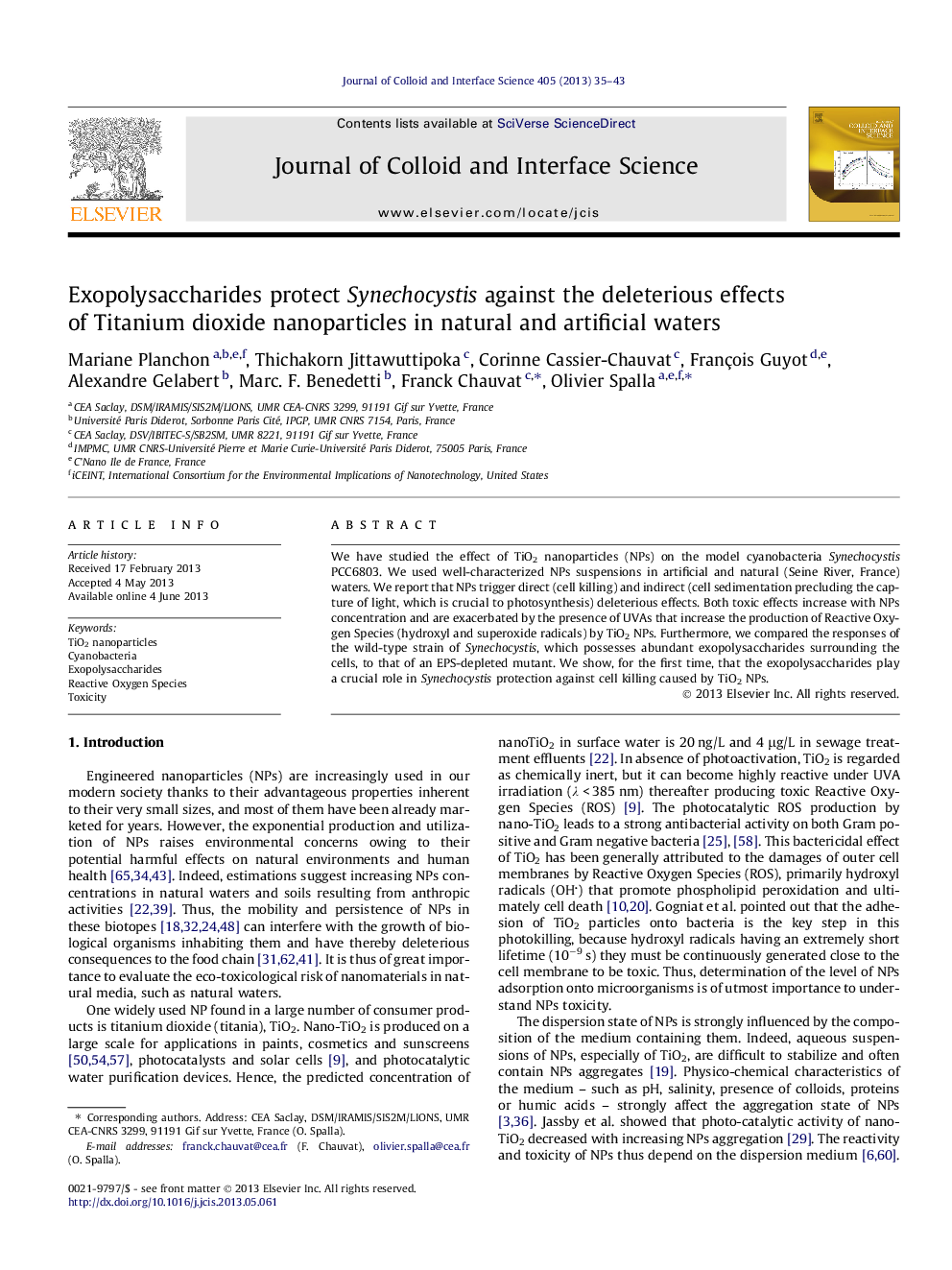| Article ID | Journal | Published Year | Pages | File Type |
|---|---|---|---|---|
| 607631 | Journal of Colloid and Interface Science | 2013 | 9 Pages |
•We assess the toxicity of TiO2 nanoparticles toward Synechocystis cyanobacteria.•The exopolysaccharide layer around cells protects them from TiO2 contact.•Cell mortality (caused by TiO2 NPs) increases in the absence of exopolysaccharides.•Contact between cells and NPs is not necessary for toxicity.
We have studied the effect of TiO2 nanoparticles (NPs) on the model cyanobacteria Synechocystis PCC6803. We used well-characterized NPs suspensions in artificial and natural (Seine River, France) waters. We report that NPs trigger direct (cell killing) and indirect (cell sedimentation precluding the capture of light, which is crucial to photosynthesis) deleterious effects. Both toxic effects increase with NPs concentration and are exacerbated by the presence of UVAs that increase the production of Reactive Oxygen Species (hydroxyl and superoxide radicals) by TiO2 NPs. Furthermore, we compared the responses of the wild-type strain of Synechocystis, which possesses abundant exopolysaccharides surrounding the cells, to that of an EPS-depleted mutant. We show, for the first time, that the exopolysaccharides play a crucial role in Synechocystis protection against cell killing caused by TiO2 NPs.
Graphical abstractFigure optionsDownload full-size imageDownload high-quality image (49 K)Download as PowerPoint slide
